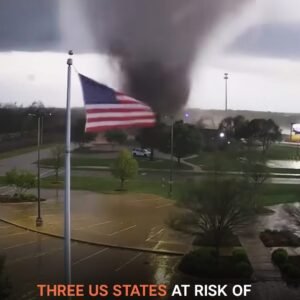Historical Context: Learning from Past Severe Weather Events
The southern and central Plains have a long history of severe weather, including devastating tornado outbreaks. Events like the 2011 Super Outbreak, which caused widespread destruction, offer valuable lessons for today’s communities. These past events highlight the importance of timely warnings, robust infrastructure, and community resilience.
By studying historical tornado outbreaks, meteorologists and emergency managers have improved forecasting models and communication strategies, ultimately saving lives. However, the unpredictable nature of severe weather means communities must remain vigilant and prepared.
Advancements in meteorological science have transformed our ability to predict severe weather. Technologies like Doppler radar, satellite imagery, and computer modeling have significantly enhanced forecast accuracy. The Storm Prediction Center now utilizes real-time data to issue timely warnings, allowing meteorologists to detect subtle changes in weather patterns.
In the aftermath of severe weather events, communities have shown remarkable resilience. Lessons learned have led to better building codes, improved emergency preparedness programs, and increased community education. Local governments now invest in storm shelters and public awareness campaigns to minimize severe weather impacts.
Effective communication during severe weather requires coordination among multiple agencies. The National Weather Service, local emergency management offices, and the Storm Prediction Center work together to ensure accurate information is shared with the public.
The increasing frequency of severe weather events highlights the need for robust support for meteorological services. Discussions about funding for the National Weather Service and the Storm Prediction Center have gained momentum, as investing in advanced forecasting technology can save lives.
Building resilient infrastructure is crucial for mitigating severe weather impacts, including upgrading building codes and improving stormwater management systems. Community resilience also depends on education and preparedness, with public awareness campaigns helping residents understand risks.
Countries like Australia, the UK, and Japan have developed sophisticated forecasting systems that provide useful benchmarks for the US. Historical case studies, such as the 2010 Queensland floods and the 2011 Joplin tornado, offer valuable lessons in managing severe weather.
Establishing international networks for weather preparedness can enhance forecasting and response capabilities. Organizations like the World Meteorological Organization facilitate data exchange and best practices.
Meteorologists emphasize that current severe weather setups result from multiple atmospheric factors converging. Local emergency management officials stress the importance of public awareness and preparedness, encouraging residents to have emergency plans in place.
The potential economic impact of severe weather events is significant. Insurance experts note that prolonged outages and infrastructure damage can lead to economic challenges, underscoring the need for resilient infrastructure.
Personal stories from those in the path of storms highlight the human impact of severe weather. Community support becomes vital during crises, with local organizations and social media facilitating resource sharing.
Severe weather events take an emotional toll, leading to anxiety and stress. Community centers are offering counseling services to help residents cope with these challenges.
Investing in resilient infrastructure is crucial for mitigating severe weather impacts. Municipalities are discussing long-term plans to enhance infrastructure resilience, including retrofitting buildings and expanding storm shelters.
